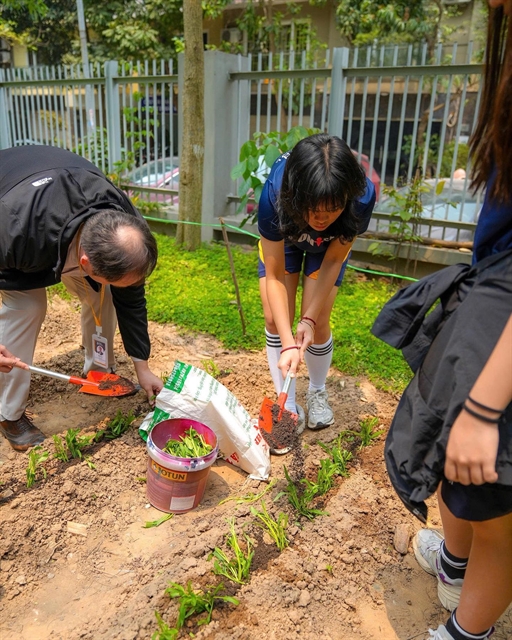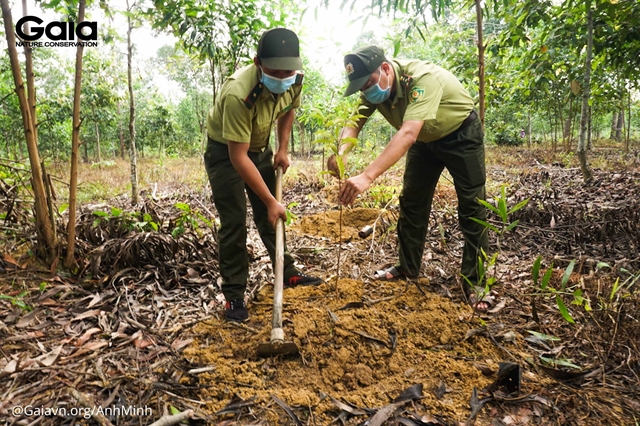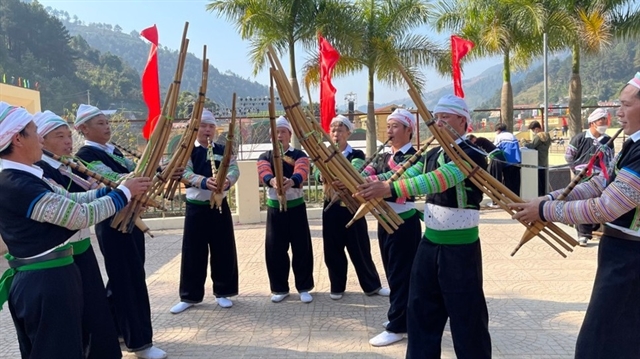 Environment
Environment


|
| Rangers from Đồng Nai Culture and Nature Reserve plant trees in the reserve area. Photo courtesy of the Gaia Nature Conservation |
HCM CITY — The non-governmental organisation Gaia Nature Conservation has planted 2,000 indigenous large timber trees on four hectares in Đồng Nai Forest.
All of the 2,000 native timber trees belong to seven species, including Chiêu Liêu (Chebulic myrobalan), Giáng Hương (Pterocarpus macrocarpus), Ươi (Scaphium macropodum), Dầu (Dipterocarpus alatus), Gõ đỏ (Afzelia xylocarpa), Gõ mật (Sindora siamensis) and Bằng lăng (Lagerstroemia speciosa).
They were planted by staff at the Đồng Nai Culture and Nature Reserve and local residents, with supervision from the Gaia team.
Despite the pandemic, Gaia and its partners proceeded with afforestation plans and ensured compliance with the Government’s COVID-19 prevention regulations, said Đỗ Thị Thanh Huyền, founder and director of the Gaia Nature Conservation.
Gaia has planted forests in Đồng Nai Culture and Nature Reserve since 2018.
In the past few weeks, Gaia conducted online meetings and calls with donors and local partners to prepare for afforestation in the Đồng Nai Cultural Nature Reserve, a major part of the Đồng Nai World Biosphere Reserve.
The effort is part of the campaign “Afforestation to prevent the next pandemic” launched by Gaia in June which includes not only afforestation activities but also communications campaigns to raise public awareness about the importance of forest planting.
The campaign also includes the planting of 10,000 trees in the northern province of Thanh Hóa.
Afforestation increases biodiversity, which helps to create a healthy home for wildlife and enhances disease resistance. Afforestation in Đồng Nai Culture and Nature Reserve strengthens the forest's ecological value, protects water resources, responds to climate change, and protects one of the last populations of elephants in Việt Nam, according to Huyền.
The forest will continue to be taken care of and monitored online by Gaia in collaboration with the Đồng Nai Culture and Nature Reserve for the next four years to ensure the highest survival rate. —VNS




